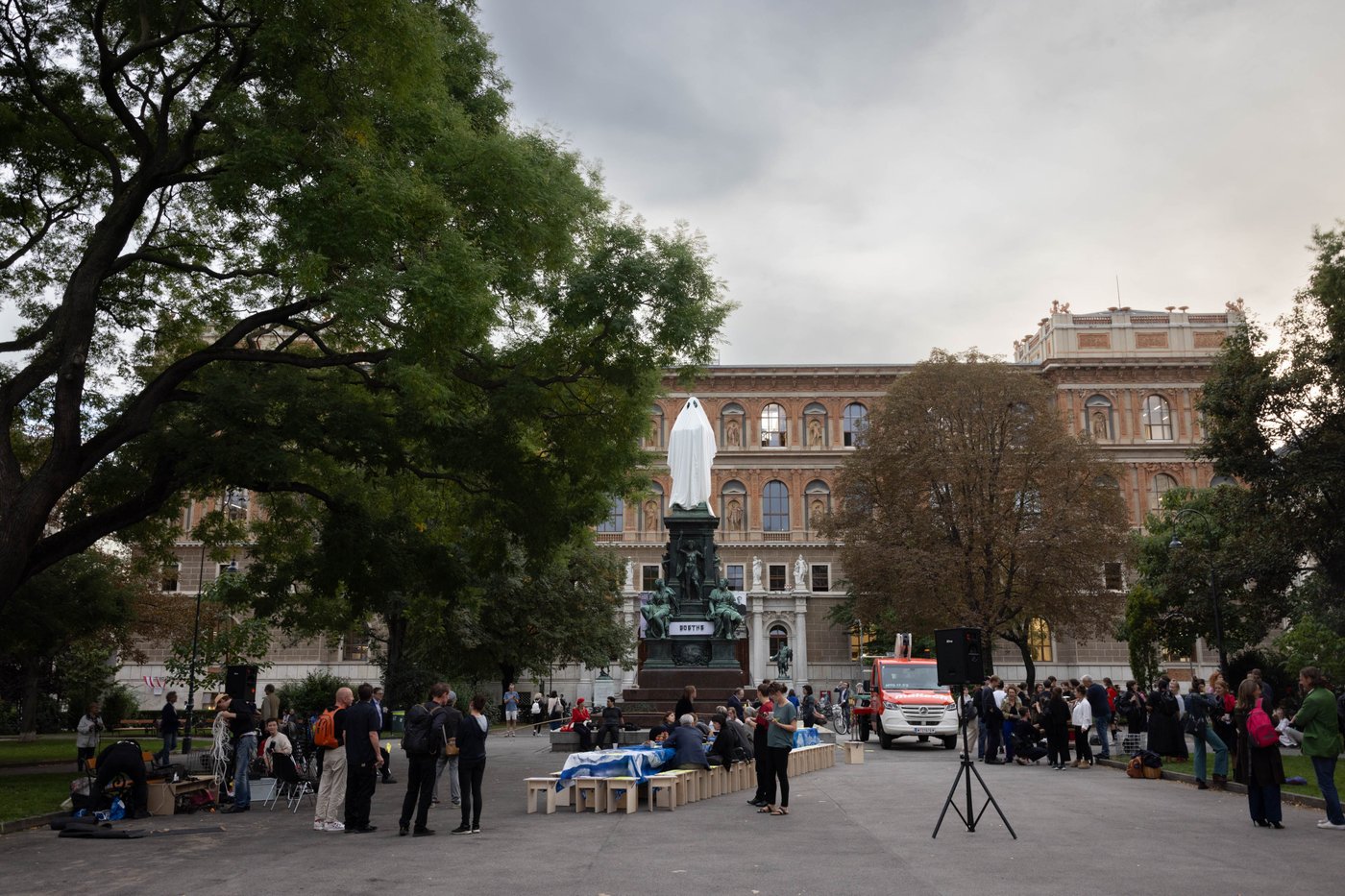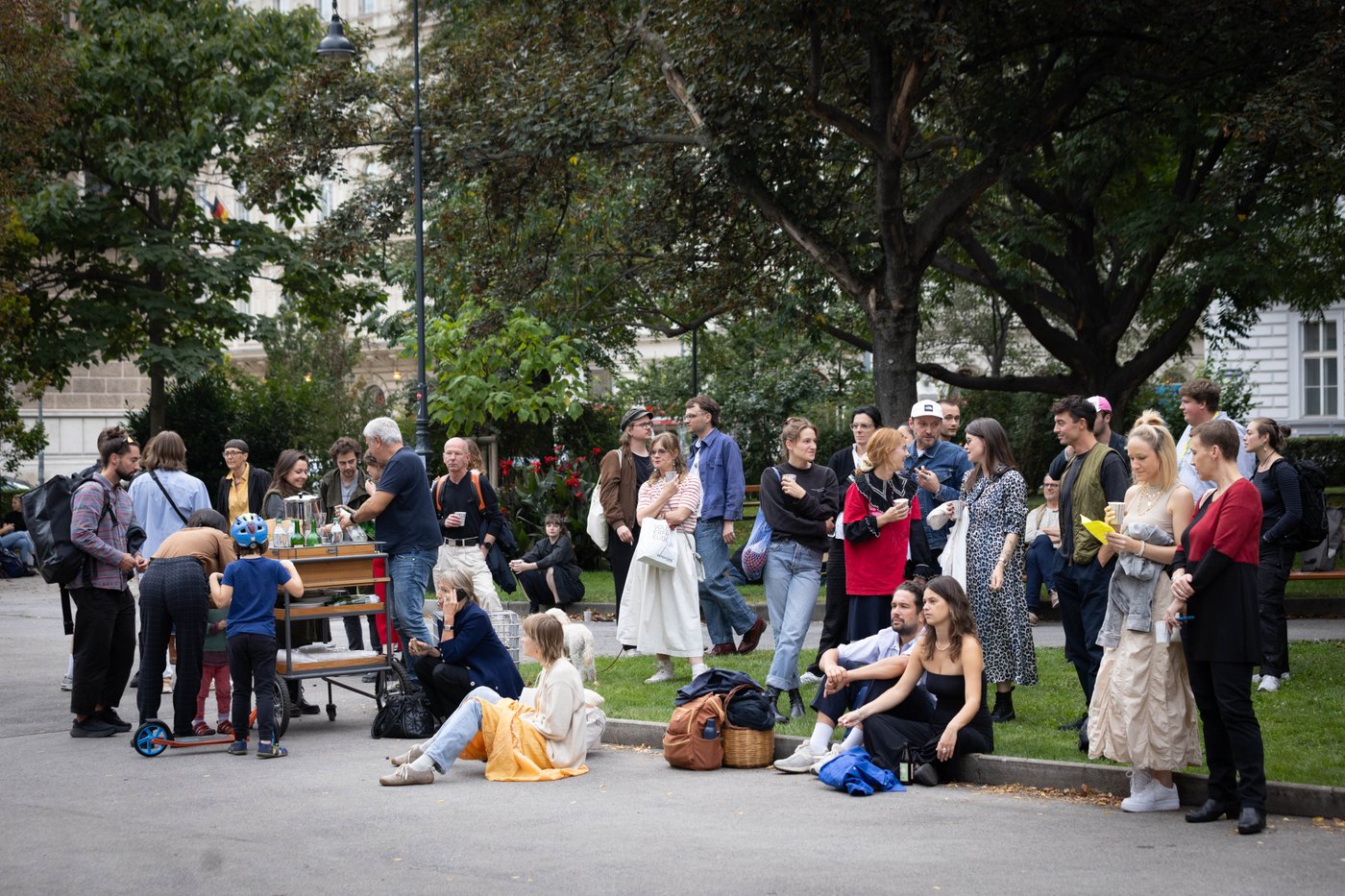Mission Statement
The Academy of Fine Arts Vienna is one of the most renowned art universities in the world. It was founded in 1692 and is well established in the (inter-)national cultural landscape as well as in urban society. The various institutes with their artistic and scientific focuses as well as the outstanding art collections contribute to its international reputation.
The Academy is a crucial hub in a network of international art and theory production. Its six institutes are connected through shared responsibilities in teaching and research as well as the development and exploration of the arts from both scientific and artistic-practical perspectives. The Academy drives debates and engages with diverse social contexts. It shapes the conditions under which it works and contributes to public discourse and developments - this is its self-understanding as a recursive university.
We offer our 1,500 students a wide range of curricula that span from painting and sculpture to photography, video, performance, and conceptual art as well as architecture, stage design, conservation, and restoration. The Institute of Art and Cultural Studies and the Institute of Science and Technology in the Arts ensure a high theoretical standard within teaching in all fields of study through courses and projects, reflecting the position of the arts in the broader historical and social context. Closely related are the Academy’s education-in-the-arts studies, which we consider as a significant contribution to the mediation of art and culture. Doctoral studies, an internationally acclaimed PhD-in-Practice program, and the Master in Critical Studies program complement the diploma programs respectively the bachelor/master programs in architecture. Students can make use of the manifold range of courses through largely individual study paths.
As a university, the Academy of Fine Arts Vienna places particular emphasis on arts-based research and teaching. The results of art production and research flow into teaching in various ways and are communicated to a broader public through exhibitions, presentations, symposia, lecture series, and publications. We consider the presentation of a complex understanding of art for the knowledge society to be our substantial responsibility alongside the education of students.
The strength of the Academy lies, among other things, in the international reputation of its teaching staff and the internationality of its students, who come to Vienna from over 50 countries and represent the Academy of Fine Arts Vienna with their artistic biographies. The central position of Austria’s capital city as a mediator between East and West plays an important role in its international orientation. The Academy collaborates worldwide with other universities as well as with art and cultural institutions. It encourages and supports its students to gain international experience as part of their studies.
Engagement with the Picture Gallery, the Graphic Collection and the Glyptothek makes the study of past art epochs becomes vivid and distinguishes itself in the critical examination of the historical heritage. At the same time, the Academy's exhibition practice is oriented towards contemporary perspectives and approaches. In addition to project spaces for trying out presentations and exhibition settings at various locations, the exhibition spaces Exhibit Galerie, Exhibit Studio and Exhibit Eschenbachgasse are further showcases for contemporary art directly in the museum and gallery environment and as an important interface between the Academy and the public.
The Academy understands itself as an open, critically reflective, queer-feminist and diverse place for the arts and sciences, from which important social impulses emanate. Through numerous programs and initiatives, it counteracts forms of discrimination in all areas and critically addresses its societal conditions concerning class-specific discrimination, the solidification and canonization of gender identities, racism and anti-Semitism. The Academy is leading in the areas of women's advancement, equality and diversity.
The Academy has set itself the goal of becoming climate-neutral by 2030 and, in its daily practice, drives forward the debate on climate change at a scientific, artistic and administrative level. In light of global challenges, the Academy develops the artistic positions and research perspectives of the art university in dialog with international partner institutions from all continents.
Teaching and research at our art university are based on a differentiated concept of art. This includes the aesthetic appearance of works and their institutional conditions as well as the forms of thinking characteristic of the artistic practice. The Academy offers a comprehensive portfolio of contemporary arts, assembling various techniques, genres, media, and traditions. Its strong emphasis on the autonomy of the arts relies on an indirect social impact that cannot be reduced to a curtailed applicability. A free approach to formal traditions plays just an equally important role as the experimental and critical-reflexive exploration of social ways of life.
Critical processes of reflection in the theoretical subjects include the basics of materials science and contemporary technical conditions, as well as on the study of the institutional and historical environment of art. A significant aspect of the Academys work has become the engagement with issues of subjectivation (with particular focus on questions of gender identity) and socio-economic power (the historical consequences of colonial domination) has developed into essential aspects of the substantial of work at the Academy of Fine Arts Vienna.
The Academy places the highest value on adhering to internationally recognized standards of good scientific and artistic practice. Honesty, transparency and responsibility are just as much a part of our basic convictions as respectful interaction with one another. In the spirit of academic freedom, different opinions are to be respected and voiced. This is how the Academy understands itself as a place for academic debate, and controversy.
The education of young artists, architects, and scholars at the Academy of Fine Arts Vienna contributes to the socio-cultural diversity of the democratic community. Furthermore, graduates of the Academy are successful players in the international art world and significantly shape the discourse on contemporary art.
The Academy continuously faces the challenge of reacting to new social, political and aesthetic developments and aligning its internal structure and working methods accordingly. With an eye on the partly unpredictable social challenges and their impacts on the fields of activity of artists, scientists, architects, restorers, educators, art mediators and other cultural professionals, the Academy aims to equip students with ideal subject-specific prerequisites, comprehensive experience in transdisciplinary work and an increased level of social knowledge and crisis awareness. In this sense, education at the Academy of Fine Arts Vienna is always also an engagement with the current social situation and a preparation for the challenges of the 21st century.
Rector Johan F. Hartle
Vice-Rector for Art and Teaching Ingeborg Erhart
Vice-Rector for Infrastructure and Sustainability Werner Skvara


![Situation at the Schiller monument in front of the academy building at Schillerplatz, project [em]Büro Veritas[/em], 2019, photo © Büro Veritas The picture shows a group of students sitting on the pedestal of the Schiller monument, obviously in a teaching situation. It is summer and you can see the baroque monument with Friedrich Schiller, some trees and behind it the Gründerzeit building of the academy.](https://www.akbild.ac.at/en/university/mission-statement/1buro-veritas-2021.jpg/@@images/image-1400-1066e8d72c9ea67ed41d453421fa1e9f.jpeg)
![Aykan Safoğlu, [em]Wenn eine Welle bricht ...[/em], exhibition view in the assembly hall at Schillerplatz, photo © eSeL.at – Joanna Pianka Printed paper webs are laid out on the marbled floor of the auditorium. You can see various projections and an installation with coat racks. The portico of the auditorium and the frieze are also visible.](https://www.akbild.ac.at/en/university/mission-statement/3esel_joa85442.jpg/@@images/image-1400-1066e8d72c9ea67ed41d453421fa1e9f.jpeg)







